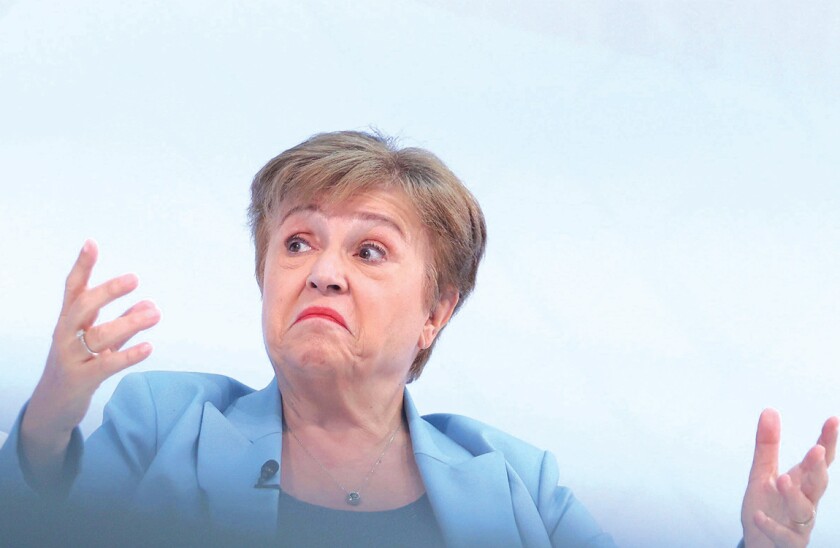The end of the artificial intelligence boom is among the greatest risks facing the global economy, the International Monetary Fund says.
Its latest World Economic Outlook places AI among the top risks. “There are echoes in the current tech investment surge of the dotcom boom of the late 1990s,” said Pierre-Olivier Gourinchas, the IMF’s chief economist, on Monday.
The direct risks from the AI bubble popping appear to be overwhelmingly concentrated in the US, but a fall in US growth would have severe global repercussions.
“There’s a lot more uncertainty around the US,” Marieke Blom, chief economist at ING, told GlobalMarkets. “The base for growth is smaller in the US [than Europe]. Consumers have been saving very little but seem to be saving more now, house prices are going down, which may have an impact on consumption via wealth effects, the trade war with China is ongoing, AI has both investment and equity wealth effects. Those are relatively large uncertainties for the US, which may affect Europe.”
A particularly concerning development is AI investment’s high contribution to growth. Blom estimates about a third of US GDP growth is related to AI capex.
“The only net positive growth in investment we are seeing in the US is in the tech sector,” she said. “That will probably continue, but it doesn’t make sense for it to sustain itself for more than a year. You need to see business investment elsewhere for growth to continue then.”
Benedicte Kukla, chief strategist at Indosuez, Crédit Agricole’s wealth management arm, told GlobalMarkets she saw the US economy as “caught between the short term pull of protectionist policies and the long term transformative potential of artificial intelligence.”
Kukla pointed to a number of ways in which AI is driving the US economy. Nearly half of trade flows in early 2025 were made up of AI-related goods like semiconductors, according to the WTO. To that can be added AI-linked stockmarket gains encouraging consumption.
Were the AI bubble to burst, the US economy would therefore be exposed in several ways: business investment would stumble, consumption would be hit by the reversal of wealth effects, and there could be further repercussions on financial stability.
Treasury trouble
In addition, there is no guarantee Treasuries or the dollar would rise in such a crash, as they did in 2008.
Brad Setser, a senior fellow at the Council on Foreign Relations, has shown that, contrary to popular belief, foreign investors pulled money out of the US during the 2008-9 financial crisis. Instead, dollar strength and inflows into Treasuries were the result of carry trades funded in dollars being unwound.
This year, tariff-linked instability has instead brought dollar weakness. Setser has also found global investors seeking relatively high US returns have accounted for most of the inflows into the country in recent years, as opposed to reserve managers seeking a safe haven.
“Easy financial conditions are masking but not arresting some softening trends, including in job creation,” Kristalina Georgieva, the IMF’s managing director, said when presenting the Outlook. “History tells us this sentiment can turn on a dime.”
